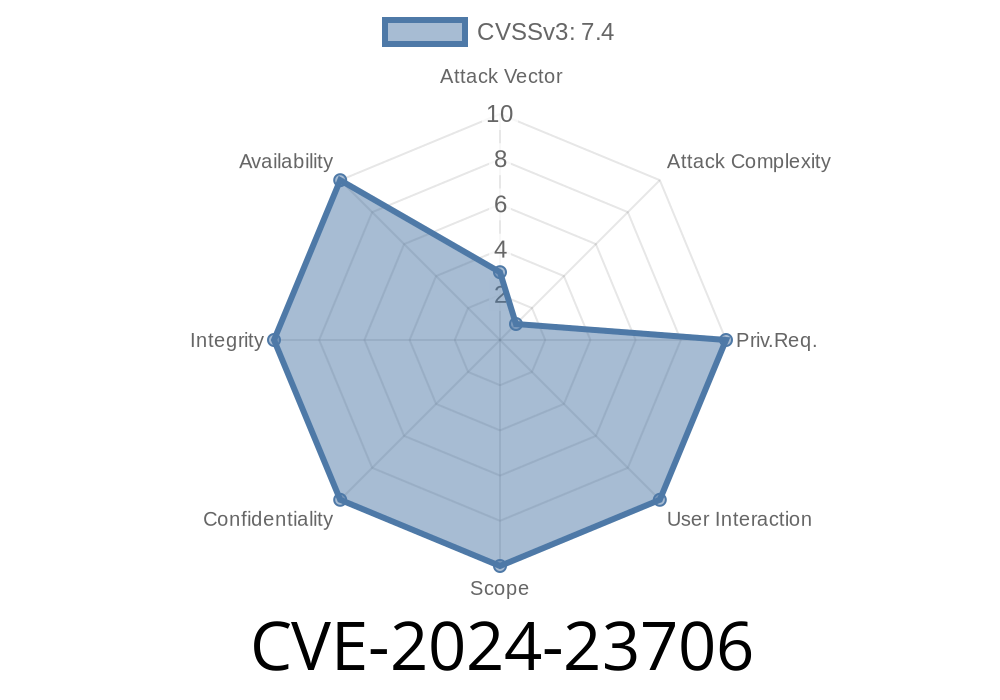Security vulnerabilities that let attackers bypass key permissions and access sensitive data are always concerning. But when these involve health data, the impact rapidly turns severe. CVE-2024-23706 is one such vulnerability discovered in early 2024. It enables local users to bypass health data permissions due to poor input validation, potentially leading to local escalation of privilege – all without needing special execution rights or victim interaction.
In this article, we'll break down exactly what CVE-2024-23706 is, why it matters, how it works (with code samples), and what you should do next.
Where Was the Problem Found?
CVE-2024-23706 was most notably found in Android's Health Connect framework (though similar patterns may exist in related Android and iOS health APIs). More details can be found in the official advisory:
- Android Security Bulletin - June 2024
The root of the issue is that certain health data endpoints failed to properly validate input parameters. This allowed crafted local requests to "shortcut" standard permission checks.
How the Exploit Works
Normally, health data APIs enforce strict permission checks. Only apps with explicit user consent can access records like heart rate, step count, or medical history.
However, with CVE-2024-23706, attackers noticed that the permission gate could be bypassed by crafting special input data. This is called *improper input validation*. In technical terms, APIs didn't sanitize or enforce checks on what should have been restricted queries.
Vulnerable Code Snippet (Pseudocode)
// A simplified API endpoint for reading health data
public HealthData readData(String type, String userToken) {
// Dangerous: Input 'type' is not validated!
if (!isValidUser(userToken)) {
throw new SecurityException("No valid permission!");
}
// Problem: The input 'type' is not validated
return database.read(type);
}
If an attacker crafts a special value for type (possibly exploiting an undocumented or edge value), they can read health data types without explicit permission—especially if the check inside isValidUser(userToken) is generic or weak.
AttackApp: malicious local app without permission
Through CVE-2024-23706, AttackApp could craft a direct IPC call (like a custom Intent or ContentProvider query) with a specially formed parameter:
// In an attacking app, crafting the exploit
Intent intent = new Intent();
intent.setComponent(new ComponentName("com.healthprovider.app", "HealthDataProvider"));
intent.setAction("READ_HEALTH_DATA");
// The key magic: inputting a custom type, possibly with traversal or null-byte tricks
intent.putExtra("type", "heart_rate\");
// Send the call
context.startService(intent);
Because the receiving API fails to validate "type" correctly, the attacker's call returns with sensitive health data—despite no permissions being held.
No root required: Attack works at "normal user" privilege level
- Sensitive data accessed: Exposed data may include heart rates, blood pressure, even medical notes
This is especially bad for healthcare apps, insurance apps, and any device storing personal health information.
Secure Code Snippet
Set<String> allowedTypes = Set.of("heart_rate", "steps", "calories");
public HealthData readData(String type, String userToken) {
if (!isValidUser(userToken)) {
throw new SecurityException("No valid permission!");
}
if (!allowedTypes.contains(type)) {
throw new IllegalArgumentException("Invalid health data type");
}
return database.read(type);
}
CVE-2024-23706 was responsibly disclosed and patched in updates as documented by Google
- CVE Details - CVE-2024-23706
- Android Security Release Notes
Key Takeaways
- Always validate and sanitize *all* input to permissioned APIs, especially for local calls and health data
Never rely solely on app-level permission checks—double down at the API level
CVE-2024-23706 is a reminder that local attacks via API loopholes can expose the most private data—so always code defensively.
Further Reading
- Android Health Connect Security
- OWASP Input Validation Cheatsheet
Spread the word! Check your code's input validation, especially if you're building for healthcare, fitness, or wearables. Your users' privacy—and your reputation—are on the line.
Timeline
Published on: 05/07/2024 21:15:08 UTC
Last modified on: 07/03/2024 01:48:01 UTC
